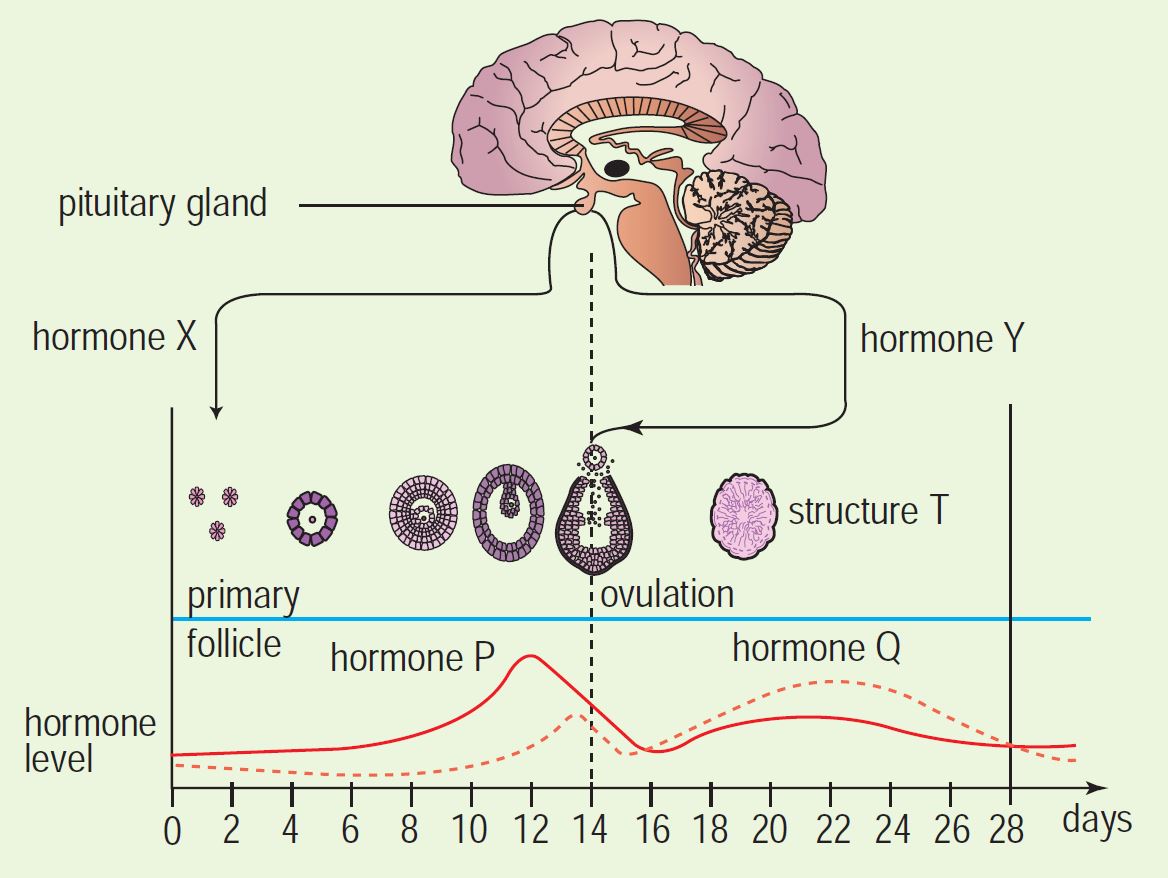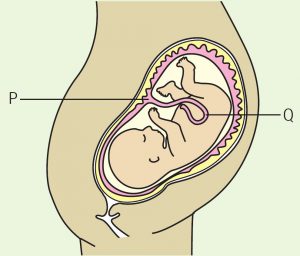Figure 1 shows the hormonal regulation of a menstrual cycle.

Figure 1
(a) State the effect on ovum development if hormone X is not enough.
(b) Explain the effects of hormone P and hormone Y imbalance.
(c) Based on Figure 1, describe the relationship between changes in structure T with the level of hormone P and hormone Q.
(i) from day 16 to day 24
(ii) from day 24 to day 28
Answer:
(a)
Hormone X (FSH) stimulates new follicle development. The lack of hormone X causes no new follicles to be developed.
(b)
Hormone P (oestrogen) restores and repairs the endometrial tissue and stimulates endometrial thickening. Hormone P also causes more hormone Y (LH) to be secreted. The imbalance between these two hormones leads to no ovulation and no thickening of endometrial tissue.
(c)(i)
Structure T is corpus luteum that secretes hormone P (oestrogen) and hormone Q (progesterone). From day 16 to 24, corpus luteum secretes hormone P (oestrogen) and Q (progesterone).
(c)(ii)
On approaching day 24, structure T (corpus luteum) degenerates. Therefore, from day 24 to 28, hormone P (oestrogen) and hormone Q (progesterone) become lesser.
 Figure 2
Figure 2
Figure 2 shows a human foetus inside a uterus.
(a) Name the structures labelled P and Q.
(b) Explain the blood composition that flows through the blood vessel at Q.
(c) Explain the function of structure P.
(d)(i) State the types of immunity a foetus can inherit from its mother.
(d)(ii) Explain how structure P helps in foetal immune response.
Answer:
(a)
P – placenta
Q – umbilical cord
(b)
• The veins in the umbilical cord transport oxygen and nutrient-rich blood from the mother to the foetus.
• The arteries in the umbilical cord transport blood rich in CO2 and nitrogenous waste materials such as urea from the foetus to the mother to be expelled.
(c)
Placenta is the site for the exchange of materials between the foetus and the mother. Nutrients, hormones, antibodies and oxygen diffuse from the mother’s blood into the foetus.
On the contrary, carbon dioxide and waste materials such as urea, diffuse from the foetus’ blood to the mother’s. Placenta also replaces the corpus luteum that degenerates during the 4th month of pregnancy to produce progesterone and oestrogen. Both hormones are needed to maintain the thickness of the endometrium throughout pregnancy.
(d)(i)
Natural passive immunity
(d)(ii)
Through P, antibodies diffuse from the mother to the foetus. When the antibodies enter the foetus’ bloodstream, the antibodies will act against pathogen. This provide immunity to the foetus and prevents disease infection.